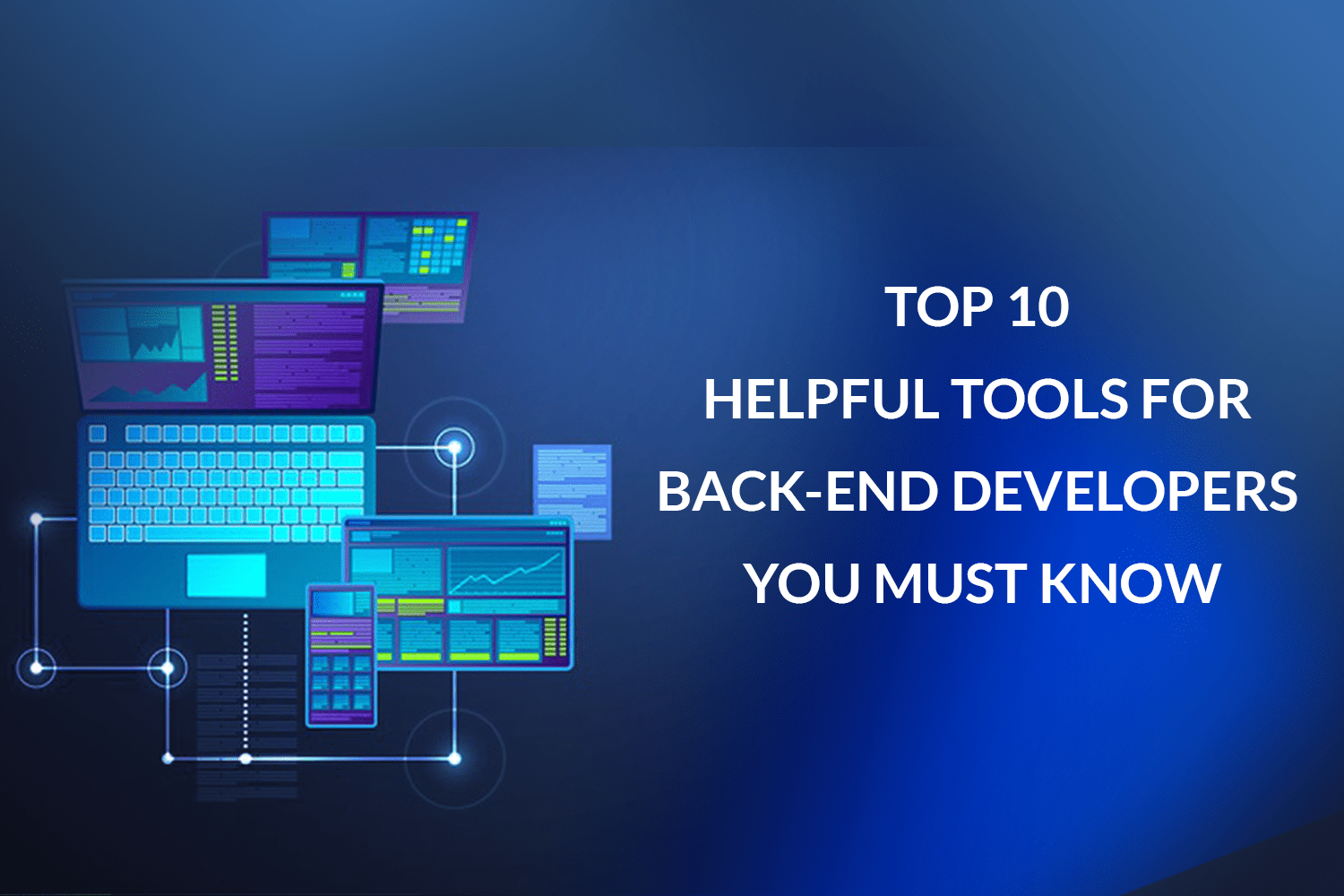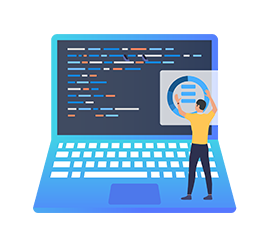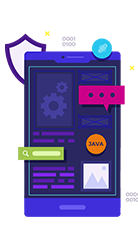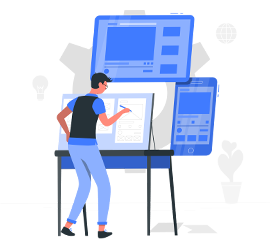April 7, 2020 | Top 10 helpful tools for back end developers you must know

Looking for great tools to help you build your backend? Check out this great list of tools any backend developer needs to be familiar with.
What Is the Role of a Back-End Developer?
Back-end development is the term used for the behind coding due to which any action is performed on any of the websites. It also refer s to server-side development. side of web development. Back-end developers are involved in creating the actual logic on which an application or a website.
Back-end developers are focused on the inner workings of web applications to build out the “server-side” of web applications. Server-side is the code and language that runs behind the scenes on the web server or the back-end. This blog concentrates on back-end developers by letting them know about the topmost helpful tools for Back-end development.
Apart from making web applications functional and useful, back-end developers are responsible for optimizing the web application for speed and efficiency. Back-end developers usually build a data storage solution with a database, which is a crucial component for all web applications since it stores information like (usernames, comments, posts, etc.).
In the following, we brief the top 10 list of useful tools that every back-end developer should have in their toolkit. Read about some of the best resources on the market today for the backend developer. A list of the top 10 essential back-end development tools:
Make back end web development breezier with these 10 tools.
Languages & Frameworks
We know there are many programming languages and frameworks involved in building the back-end of web or mobile applications. Frameworks are libraries of pre-written code with a pre-imposed structure that a back-end developer can use according to the requirements and needs. Whereas, a programming language is a superset of scripting languages like Ruby, Java, Python, PHP, Perl, Erlang, and Node.js which can be used to write instructions for execution.
- Web Servers
- Database Management Systems
- Local Development Environments
- Collaboration Services
- Website Performance Testers
1. PHP
PHP has been introduced for the last 23 years and it has become the world’s most popular server-side scripting language. PHP is pre-installed on most hosting websites, is known to be easy to use, and for support and functionality. What’s more, many frameworks have been launched under PHP to simplify the process of application development and easing the tasks of the developers. Using the frameworks, developers can save their time and can meet clients’ expectations and very well established PHP frameworks on the market that make developing applications more spontaneous and agile. Some of the most popular ones are Laravel, Phalcon Framework.
2. Python
Python has become a popular language for building applications in recent years. Python does exceptionally well in the most leading popularity rankings in the software development industry. With a reputation for being fast, easy to learn, and carrying wide support, Python has become the first choice for many new programmers. It’s also the language of choice for data scientists and engineers. A couple of the most popular Python frameworks out there are Django and Pyramid.
3. Ruby on Rails
Ruby on Rails is the open-source web app framework that uses the Ruby programming language. Ruby on Rails has garnered a strong following, especially among tech startups. Some of the best-known firms are using this framework to build their sites. To choose Ruby on Rails is productive in the following ways- In less time you can experience an app with more features. Ruby on Rails profound development services will deliver high-grade results along with sustainable solutions.
- You can get in touch with the specialists to resolve any issue related to your web application.
- The coding convention will allow the developers to modify the project and will be able to run the MVP faster and can check the working of the project.
- The changes are reflected quickly, it saves your time and money while working on ROR.
- Ruby generators and modules serve as good libraries which in turn accelerate the development process.
- It performs testing by instigating automation. While coding you can incorporate testing that saves your time.
4. Node.js
Node.js is a cross-platform JavaScript runtime environment for developing a diverse variety of server tools and applications. One notable feature of Node.js is that it contains a built-in library to allow applications to act as a Web server without software such as Apache HTTP Server or IIS.
More than 50% of respondents said, they prefer Node.js, the popular server-side Javascript coding framework. Node.js is a JavaScript runtime that runs on the V8 JavaScript runtime engine. Node.js adds capabilities to Javascript (front-end language) to let it do more than just creating interactive websites. It uses an event-driven, non-blocking I/O model that makes it lightweight and efficient.
5. Laravel
Laravel is probably one of the more popular PHP frameworks on the market right now. Known for its elegance and simplicity, Laravel meets a diverse range of programming needs and projects, from beginner to advanced, and is well suited for projects of all types and sizes – from basic scripting to huge enterprise applications. It’s built on top of several Symfony components that ensure a solid framework for producing well-tested and reliable code.
Next, was Laravel, a prominent member of a new generation of web frameworks. It is one of the most popular PHP frameworks and is also free and open source. It features:
- A simple, fast routing engine
- Powerful dependency injection container
- Multiple back-ends for session and cache storage
- Database agnostic schema migrations
- Robust background job processing
- Real-time event broadcasting
The latest stable release, Laravel 5 is a substantial upgrade with a lot of new toys, at the same time retaining the features that made Laravel wildly successful. It comes with plenty of architectural as well as design-based changes.
Databases
6. MySQL
MySQL is the world’s most popular open-source relational database. It’s easily accessible and is often known to be part of the LAMP web development stack, standing for the ‘M’ in the acronym of popular tools, along with Linux, Apache, and PHP/Perl/Python. The fact that MySQL is free, easy to set up, and scales fast are some of the main reasons why it’s the best match for many backend developers.
7. MongoDB
MongoDB is a free and open-source NoSQL database system. MongoDB saves data in binary JSON format which makes it easier to pass data between client and server. The platform is closely associated with MEAN ( an acronym for MongoDB, ExpressJS, AngularJS, and NodeJS), a JavaScript-based set of technologies used for building web applications.
Microservice Platforms
8. Docker
Docker is the open-source platform that puts microservices on the map by providing developers and testers with a fast and easy-to-use packaging, distribution, and deployment mechanism for building containerized applications. Docker also offers a formidable ecosystem of tools, such as native clustering (Docker Swarm) registry service (Docker Hub) and cloud service (Docker Cloud). Docker is the reason why many software-powered organizations are moving from monolithic code bases to microservices architectures. Docker is an open platform for developing, shipping, and running applications. You can develop applications very fast and deploy them fast. Using Docker, it is easy to create the required services separately and manage them as microservices without affecting other services.
Web Server Technologies
9. Apache
Apache is an open-source web server and currently used by 50.1% of all websites. This indicates the reliance that folks place on Apache to run their web services. It’s a proven, reliable tool that has stood the test of time, and played a key role in the early growth of the internet. This is one biggest advancement in the software industry where we used to have big, monolithic code. Now, the biggest piece can be divided into separate services and managed easily using Docker.
Git Clients & Services
Github Client
Github Client was created to minimize the cost of building apps on multiple platforms. By using the Electron software framework, developers can now easily write cross-platform desktop applications using JavaScript, HTML, and CSS. Essentially, Github Client + Electron provides developers with the benefits of a unified cross-platform experience that’s completely open-source and ready to customize. Back-end developers play a critical role in web development teams and are responsible for handling data storage, and ensuring content gets delivered to the front-end.
Hopefully, by now you’ve got a little better of a grasp on helpful tools on back-end development in the web industry.

 .Net
.Net Vue.js
Vue.js Twilio
Twilio Postgre
SQL
Postgre
SQL PHP
PHP React.js
React.js Bootstarp
Bootstarp MySql
MySql Laravel
Laravel Woo
Commerce
Woo
Commerce Firebase
Firebase SQL
Server
SQL
Server Angular
Angular Python
Python ChatBot
ChatBot Wordpress
Wordpress Node.js
Node.js Full
Stack
Full
Stack MongoDB
MongoDB Drupal
Drupal





















